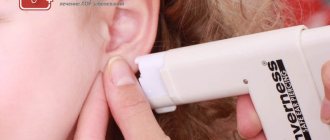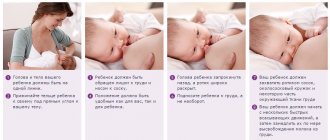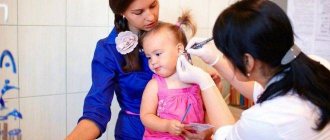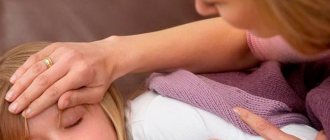Why earrings cause ear infections
Let's look at the most common causes of purulent formations:
1. The process of piercing is a surgical intervention after which a small wound is formed. Due to improper work by an unqualified technician, an important point or vessel may be affected. In this case, discomfort is felt not only from simple jewelry, but also from gold earrings.
2. After a puncture, you need to take care of the hole for a long time. You cannot immediately exchange special medical earrings for your own, even silver or gold ones.
3. Pus may occur due to wearing poor-quality jewelry. The cause may be a tight fastener. Also, earrings in the form of studs often compress the earlobe, and purulent formations appear.
4. If the ear with a silver earring is festering, it may be an allergy to silver.
5. Suppuration may occur due to sensitive skin. In this case, wearing any earrings will be accompanied by frequent inflammatory processes.
Unfortunately, some diseases, such as diabetes, can also cause suppuration. Then ear piercing is contraindicated.
What to do if holes in your ears fester
First of all, punctures should be treated with bactericidal agents: alcohol, calendula tincture, chlorhexidine. It is possible to use healing ointments. Before applying the ointment, treat the wound with hydrogen peroxide.
You can use traditional methods:
1. Aloe. Cut the sheet in half and apply it to the wound on both sides, securing it with a band-aid. Leave it on for three hours, then replace it with a new one. Repeat the procedure several times.
2. Saline solution. Dissolve a little salt in warm water, place the sore ear in the solution for 6 minutes. Do the procedure at least twice a day.
In case of purulent discharge from ordinary jewelry, replace them with earrings made of precious metal. If inflammation occurs from gold earrings, change them to silver and vice versa. Before putting on, treat any earrings with a disinfectant.
Have you done all the recommended procedures, but your ears still do not stop festering? Make an appointment with your doctor for a consultation. A medical examination will determine the true cause of purulent discharge, and a specialist will prescribe effective treatment.
Mothers try to pierce their daughters’ ears as early as possible, but they encounter a problem: if they pierce their child’s ears, they fester.
Earrings are part of the attribute of a stylish and elegant modern woman. And it is no coincidence that many people even pierce the ears of newborn girls, since it is believed that children up to one and a half years old tolerate this procedure painlessly. However, ear piercing is a small but surgical operation, and it requires certain rules to be followed. If something goes wrong, suppuration may appear in the wounds.
How to treat ears after piercing
After the puncture, the master in the salon or medical facility will hold a consultation with parents to explain how and with what to treat the ear area during the period until the wound heals:
- 2-3 rubles are recommended. per day, disinfect the earlobe on both sides with an antiseptic and periodically move the earring to prevent the puncture site from festering;
- diluted medical alcohol is well suited for processing (if the child is very small, it is better not to use), Miramistin, Chlorhexidine, 3% hydrogen peroxide;
- Medical glue is also considered a safe and effective remedy for children, preventing the process of suppuration. When using it, there is no need to twist the earring;
- the use of ointments such as Levomekol, Levosin is allowed;
- Before treating your ears, you must wash your hands well with antibacterial soap;
- the antiseptic must penetrate not only into the ear cavity, but also into the wound itself. Therefore, it is necessary to moisten the earring with a few drops and scroll it 2-3 times;
- at the first signs of inflammation, treatment should be carried out for at least 5 rubles. in a day. You can rinse your ear with a slightly pink solution of manganese;
- After the puncture site has healed, you need to remove the earrings and treat them and the wound site with hydrogen peroxide, and then insert them back.
Important: for the first 5 days after the puncture, the girl cannot be bathed and her hair must be tied up in a ponytail or secured with a hairpin.
Why can ears fester?
The lobe may begin to fester immediately after it is pierced. And you will need to take measures to prevent serious illness. And the ear pain will need to be relieved, because every careless movement will remind you of the problem. In order to save the child from such discomfort, you need to find out the cause of the suppuration.
Piercing the earlobe requires professionalism from those who carry out this procedure. A prerequisite is compliance with all sanitary and hygienic standards. Everything must be done sterilely, and the puncture needle must be disposable. If these rules are not followed, then an infection can enter the wound, after which pus forms and the earlobe begins to “burn.”
Inflammatory processes are possible at the puncture sites if you have previously had blood diseases.
Suppuration can be due to earrings, when an allergy to one or another material from which the jewelry is made appears.
Ears heal in 1.5-2 months. And during this time you will have to forget about going to the pool, and you need to wash yourself so that water does not get on your ears. Hair should be combed and styled so that it does not come into contact with the earlobe.
If the earlobe is strongly pinched by the lock from the earring, then this is also fraught with the occurrence of inflammation. At this moment, you should not put on your child stud earrings, under the clasp of which discharge from the wound usually accumulates, and pathogenic microbes immediately begin to accumulate in them.
A prerequisite is that after the puncture you need to protect yourself from cold and drafts.
What to do in these cases
In the first few days after the puncture, keep hydrogen peroxide or diluted alcohol nearby, which are needed to treat the wounds. If your ear is swollen after a puncture, rinse it with potassium permanganate until the swelling subsides. In this case, the earring must be moved. This needs to be done within the first few days. But if suppuration does appear, the cause should be eliminated.
If your ear becomes inflamed after putting on new earrings, then they are not suitable. Treat the wounds with an anti-inflammatory agent and decide what earrings to wear for the child. For the first month, let the child wear medical earrings. And then you need to change earrings with clean hands and with caution.
It is better to choose products that are made from harmless alloys, for example, titanium or its variety - Teflon, which does not contain harmful impurities. Children's earrings should be light, with an arch with small stones on the outside. It is believed that gold or silver is more suitable for a child. However, if you get a piercing, you should not put them on right away. Expensive gold jewelry contains impurities that can cause allergies. And when silver comes into contact with blood, the process of silver oxidation occurs. The resulting silver oxide will delay the healing of the wound.
Before going to bed, you need to free your ear from the earrings so that the baby does not damage the wound with careless movements during sleep.
Sometimes, during a puncture, the needle can get into a vessel, and then the wound on the earlobe may not heal for a long time, then you need to see a doctor who will prescribe treatment and medications.
Three percent hydrogen peroxide is used to wash pierced ears, and then you can use anti-inflammatory ointments and solutions.
How to prevent the development of infection after a puncture
To avoid earlobe inflammation in a child after ear piercing, the following rules must be followed:
- Choose the right period for this procedure. The best months for ear piercing are May and September, since the air temperature allows you to avoid hypothermia of the auditory organ and its injury as a result of frequent changes of warm clothes. Also at this time there is less danger of contracting an infection.
- Have your child examined by doctors such as a pediatrician, ophthalmologist, otolaryngologist, and allergist. The pediatrician will conduct a general diagnosis of the body in order to identify pathologies for which this procedure is not recommended. The optometrist will perform an examination of the visual system, since the earlobes are closely connected to the eyes. An ENT specialist and an allergist will help you identify certain diseases that can cause suppuration and choose the right anti-allergenic earrings.
- Select a specific beauty salon or medical facility with a specialized sterile room.
- During the procedure, make sure that the specialist puts on a mask and gloves, thoroughly treats his hands, instruments and the puncture site with alcohol or other means of disinfection.
- Buy earrings in accordance with doctors' recommendations. A gold item is best suited for a child. It is considered a hypoallergenic metal. You also need to choose lightweight earrings with a not very tight clasp.
- After a puncture, it is necessary to promptly carry out hygienic treatment of the ear cavity.
Important: it is not recommended to pierce the ears of children under one year of age due to their unawareness of following certain rules after the procedure, which can lead to suppuration of the earlobe, and the use of medications at this age is strictly limited.
Folk remedies against suppuration after ear piercing
In addition to medications, you can turn to remedies that are available to everyone at home, if you cannot immediately go to the pharmacy:
- Aloe leaves, cut in half, are applied to the wound, secured with a band-aid. They are replaced with fresh ones every 2 hours.
- Melted pine resin with butter (1:1) helps effectively. Lubricate the wound with this product twice a day.
- Salt water disinfects. A few tablespoons of sea salt are dissolved in water (preferably warm and boiled). Pour water into a container in which it would be convenient to place your earlobe. Soak the wound in the saline solution for 5 minutes, and then wipe it dry with a napkin using blotting movements. Do these ear baths 2 times a day.
- A plantain leaf is also suitable, which should be kept under running water before use.
Another popular method is to moisten the wound with saliva if the lobe is festering. But this is a dubious method and it is hardly worth testing its effect on a child.
If pus appears after getting your ears pierced, don't panic. Find out the reason and use our advice. It would be a good idea to see a doctor.
How quickly the wounds heal depends on the child’s immunity and how you care for the ears after the piercing.
Prevention
When choosing jewelry, give preference to gold. This metal is the safest and rarely causes side effects.
In order to avoid ear infection during or after a puncture, the following preventive conditions must be observed:
- To carry out this procedure, contact a specialist at a beauty salon or medical facility;
- carry out correct and timely hygiene of the puncture site and ear area;
- do not forget to treat the wound and earlobe with antiseptic agents and strictly adhere to the necessary rules;
- choose an earring made of hypoallergenic metal (preferably gold, without any impurities), fairly light in weight and easy to fasten;
- avoid any traumatic situations;
- carefully put on and take off clothes and hats, wash more often to avoid infection;
- touch your ears with your hands as little as possible;
- do not allow hygienic detergents to get into the ear cavity, so as not to cause allergic reactions;
- change your baby's pillowcase daily;
- before the procedure, provide support to the immune system through proper nutrition and taking a course of vitamins;
- treat all inflammatory processes affecting the ears and eyes before going to the specialist for ear piercing.
Many mothers try to pierce their daughters’ ears at an early age, without thinking about how to do it correctly so as not to cause an infection. To prevent your child from being exposed to a dangerous infection, try to undergo the necessary examination before this procedure and strictly follow the rules for caring for the ears after a piercing, and preventive measures to prevent suppuration. If suppuration of the earlobe occurs, be sure to consult a doctor to prescribe appropriate treatment.
Contraindications for ear piercing
No matter how old the girl or woman who is getting her ears pierced is, it is necessary to find out what the contraindications are. And only after this you need to go for ear piercing, and trust this operation to a professional to prevent inflammation.
Contraindications:
- chronic disease (diabetes mellitus, skin diseases);
- there is a predisposition to the occurrence of keloids;
- infection 2 weeks ago;
- weakened immunity.
It should be borne in mind that even if there are no contraindications and the needle was sterile, after piercing the child’s ears, suppuration may begin and, possibly, a keloid scar (overgrowth of connective tissue) may appear.
The condition of the child is also important; if he is scared and protests against this procedure, then there is no need to insist; in such cases, the healing of the wounds will take a long time and be painful.
To protect the child from problems, before the puncture, you can show him to a dermatologist, who will check the condition of the child’s skin to see if it is prone to the formation of a keloid scar. If there is such a risk, then it is better to avoid wearing jewelry in the form of earrings.
After a piercing, you need special care for your ears. The puncture site should be treated with an alcohol solution 3-4 times a day. Sometimes the puncture hole can become inflamed, reacting to a foreign body. The puncture site should be treated with a cotton swab dipped in an alcohol solution. At the same time, you should not remove the earring; it will not ease the pain, but then it will be difficult to put the earring back on. Levomekol ointment will help get rid of purulent inflammation. Before going to bed, you need to lubricate your earlobe with this ointment.
Getting your ear pierced is not difficult or scary. It is important to follow the rules of hygiene so that ear piercing does not cause unnecessary trouble, the wounds heal quickly, and the earrings make the child happy. If the wound is severely festering and bleeding, the ear is swollen and inflamed, or other health problems appear, be sure to consult a doctor.
What does it take for pus to start coming out? Just two things - a wound and an infection.
And if the earlobe is festering, the most obvious conclusion is that the ears were pierced.
Most often, problems arise shortly after this event, but this is not at all necessary. If you have been wearing earrings for many years, you may still encounter very unpleasant situations.
Why do my earlobes fester?
A puncture from an earring is no different from any other wound. After all, the piercing process itself is, first of all, a surgical operation. It may be small, but no less serious.
But for some reason this does not prevent many people from treating it very lightly. Most of the causes of rot stem from this relationship.
- "Homegrown Surgeon"
. Instead of turning to a specialist, many people prefer to trust a friend or acquaintance. Or even to yourself. Therefore, the ear piercing procedure may have been performed incorrectly, resulting in an important point in the earlobe being hit or a vessel being affected. In this case, problems cannot be avoided. Many people believe that ordinary earrings are to blame, but in this case, even gold earrings will hurt your ears. The only way out of this situation is to take out the earrings so that the punctures heal, and over time, pierce them in a different place - Incorrect care
. Or its complete absence. After piercing, ears require careful care for a very long time. You cannot immediately abandon procedures or change earrings prescribed by a specialist. A simple desire to show off in front of friends can lead to serious problems. - Bad earrings
. Perhaps your earlobe is festering because of the earrings. They may be made from low-quality material. Or maybe they have very tight fasteners. For example, carnations, beloved by many, very often strongly squeeze the earlobe, which leads to suppuration. Especially if your ears have been pierced recently. - Predisposition of the body
. Sadly, there are a number of reasons why ear piercing and any piercing in general can be strictly contraindicated. These are various congenital defects, diabetes mellitus, hemophilia, hepatitis, bronchial asthma. As well as various allergies, including to metals. - Ear pain often occurs if a girl does not wear earrings for a long time
and puts them on for some holiday. In this situation, the best thing to do is to buy small gold studs and wear them constantly, so that for the holiday you can wear larger earrings
Of course, these are not all the reasons. But the most common ones. A visit to a doctor will help you more accurately determine why your earlobe is festering and hurting. But for some reason, most women do not want to contact them with such a “minor” problem. What a waste.
What to do if your earlobe hurts from earrings?
So, what to do if, after wearing your favorite earrings, you experience pain or your ears begin to fester. Painful sensations in ear piercings cannot be ignored; any discomfort signals some problems in the body.
If your ear is infected by an earring, it is recommended to take the following measures:
- A pierced earlobe should be treated with an antimicrobial agent.
Take a cotton swab and soak it in rubbing alcohol, then carefully clean the sore area and be sure to wipe the bow of the jewelry. You can also leave the earrings in alcohol overnight, this way they will be well disinfected. - If you have pain from ear piercings, alcohol tincture of propolis
. Treat the earring twice a day with the tincture and move it inside the puncture. - If your earlobes fester at the puncture sites, then first of all you need to remove those earrings after which your ears began to fester. And return to those that did not cause you such problems. It is known that jewelry made of precious metals can not only prevent inflammation of the earlobes, but also promote their rapid healing.
- If your ears start to hurt from gold earrings, try changing them to silver ones
. Just before wearing earrings, be sure to treat them with alcohol or calendula. - If these recommendations do not help, then it is better not to wear earrings and immediately consult an allergist
. He will help you find out the reason why you have an allergic reaction to wearing earrings
Getting rid of pus: what to buy at the pharmacy?
Do not self-medicate for more than a couple of days. If the pus does not disappear, consult an otolaryngologist
(popularly, to ear-throated nose).
Although, of course, there are many different drugs that are created to solve this problem.
The simplest and most affordable drug that can be found in a pharmacy is hydrogen peroxide
. You can wash your earlobe with it 5-7 times a day.
In addition, drugs such as levomekol, chlorhexidine, metrogyl
and the like. Some of them are prescribed by specialists after piercing.
For ear inflammation after piercing,
wounds must be treated. For these purposes, you can use medicinal solutions or ointments, such as levomekol ointment, tetracycline, celestoderm, solcoseryl, chlorhexidine and miramistin ointment. Before using ointments, it is recommended to wash the wound with a three percent solution of hydrogen peroxide
But don’t try to coat everyone’s ears at once. From the many offered, select 1-2. Moreover, none of the remedies gives an immediate effect. Use them 1-2 times a day. And at night, if the earlobe is festered, apply tetracycline ointment.
Folk remedies for those whose earlobes fester
For some reason, saliva has become one of the most popular remedies for pus.
. It seems like if you lubricate your earlobes with your own saliva in the morning before breakfast, the pus will gradually disappear. A frankly dubious remedy with very questionable effectiveness.
Even if we are talking about folk remedies, it is better to trust more reliable methods. For example, aloe
. Its leaf can be cut lengthwise and applied to the lobe on both sides, secured with a band-aid. After a couple of hours it must be replaced with a fresh one. And so on several times. Aloe is excellent at drawing out pus and will help cope with the problem even if you can’t get to the pharmacy.
If the inflamed earlobe is festering, it can be treated with a saline solution
. For the latter, just dissolve a little salt in warm boiled water and give your ears salt baths.
By the way, a solution of sea salt is much more effective for this procedure. Take a bowl so wide that you can immerse your sore ear in it, put a couple of teaspoons of sea salt (or regular table salt) in it and pour boiling water over it. The solution must be stirred until all the crystals disappear, then lower the earlobe for five minutes. And then blot them with clean gauze or a sterile bandage. The procedure must be performed at least twice a day
You can also use pine-resin balm
. For it you will have to melt butter and pine balsam in a ratio of 1 to 1. And lubricate the wounds with it twice every day.
If preparing such a remedy is difficult, you can simply use calendula
u. Its solution is also considered an effective means for removing pus and healing wounds.
Whatever means you choose, always act according to the situation. If the problems started after changing earrings, then you urgently need to return to the old ones. Or perhaps you should switch to jewelry made of precious metals
, best of all - from gold. Such problems almost never happen to him.
Jewelry is beautiful. But for the sake of this beauty you should not neglect your health. And if your earlobe begins to fester, it means your body is asking for more attention. Listen to this request! Based on materials
Most often, to initiate the decay process, a wound and an infection introduced into it are necessary. If these requirements are met, you can successfully create a rotting area on any part of your body or those around you. on the earlobes in the vast majority of cases occur when they are pierced for wearing earrings. The correct puncture must be carried out by a master who knows how to follow all medical rules and knows the basics of anatomy. With this puncture, blood vessels and nerve endings are not affected, and practically no blood comes out.
Although the master should be blamed first of all for the purulent consequences of the puncture, in some cases the cause of purulent lesions may be the characteristics of your body, improper postoperative care of the wound and failure to maintain hygiene when wearing jewelry.
What to do if your child’s ear festers after a puncture?
The most important thing to do when suppuration occurs in the earlobe is to eliminate the cause of the inflammatory process. To do this, you can use both medications and folk remedies based on medicinal plants.
Medicines
To select a medicine for your child, you need to consult a specialist who will select ointments from the following list:
- Tetracycline ointment contains an antibiotic and is therefore not approved for the treatment of children under 11 years of age. When using it, adverse reactions are possible in the form of allergies, swelling, redness, and digestive disorders. It is strictly forbidden to consume dairy products during this period;
- Miramistin (children over 3 years old);
- Chlorhexidine. Not recommended for trauma to the auditory organ;
- Levomekol. The use of this drug may be accompanied by burning, itching, swelling, therefore, if such adverse reactions occur, treatment should be stopped;
- Solcoseryl. This ointment is prescribed after the wound has dried, and if a fresh wound is suppurating, you can use the drug in the form of a gel;
- Celestoderm. This ointment has proven itself well in the treatment of suppuration caused by allergic reactions, and is approved for children from 6 months.
Before applying the ointment, it is necessary to treat the affected area with 3% hydrogen peroxide. It is recommended to rinse the earlobe with it from 5 to 7 r. per day. Several ointments are selected for treatment. In order to reduce pain, the doctor prescribes Nurofen or Paracetamol, which will not only relieve pain, but also relieve inflammation. To relieve allergic reactions, antihistamines are prescribed - Loratodine, Suprastin or Flucinar ointment.
Important: before using any drug, make sure that your child is not allergic to the components in its composition.
Causes of earlobe suppuration
There are a number of human diseases or conditions for which piercing is contraindicated. These include:
- epilepsy,
- mental disorders,
- bronchial asthma,
- hemophilia,
- hepatitis,
- diabetes,
- various congenital defects (heart, kidneys, etc.).
The specialist must be aware of the characteristics of your body and health status.
We should not forget about metal contact dermatitis. There is practically no allergic reaction to gold, but many people have problems with nickel jewelry and the earlobe becomes suppurated.
.
Complications
Limited purulent inflammation in the area of the punctured canal when the protective shaft of leukocytes is disrupted (an attempt to squeeze out pus, knead or warm the lobe) can spread to the surrounding tissues, involve the lymph nodes of the postauricular or parotid groups in the process, give lymphangitis (a red painful stripe of an inflamed lymphatic vessel), form diffuse massive inflammation of the soft tissues of adjacent areas (phlegmon) or limited deep purulent inflammation (abscess), which cause general intoxication (weakness, weakness) and can increase body temperature. A person with severe immunodeficiency may even develop sepsis with multiple organ failure. The development of such complications will require the help of a surgeon and the addition of antibacterial therapy. This delays healing time, requires money and leads to tissue scarring, spoiling the aesthetics of the face and ears, and sometimes even threatening life.
The best treatment is rinsing the earlobe
The lymph released at first after the puncture should not scare you, although this process slightly resembles purulent discharge. Rinse the puncture thoroughly with chlorhexidine or miramistin; you can also use hydrogen peroxide, alcohol or saline solutions. This will prevent infection and promote wound healing.
The earrings themselves must also be constantly processed, and all that are available - what if you urgently want to change the jewelry? Until the puncture has completely healed, it is better not to remove the jewelry, but to process it, carefully turning it in different directions. The wound should always be open and dry, and not covered with a band-aid - this prevents air circulation and rapid healing.
And yet, after a puncture, especially if done at home, unprofessionally and under the influence of emotions, complications may arise.
Types of earlobe suppuration
If the puncture constantly festers and does not heal for a long time, so-called keloid formations may occur. Their treatment is quite problematic, although there are many ways. The most reasonable thing in this case is to consult a doctor, or your specialist, if you still consider him a professional.
A puncture wound is practically no different from other wounds affecting delicate areas of the human body. Traditional medicine has a number of methods for treating festering old wounds.
When to see a doctor
If your child complains of the following symptoms after ear piercing, you should consult a doctor immediately:
- elevated temperature;
- inflammation of the lymph nodes;
- swelling of the ear tissues;
- the earlobe has a seal that quickly increases in size;
- copious purulent discharge;
- the medications used do not bring the desired effect;
- pain in the area of suppuration, especially aggravated by touching;
- hearing loss.
If a child does not consult a specialist in a timely manner, the child may develop inflammatory processes in various parts of the ear, paralysis of the facial nerve, and keloid scars.
Treatment with folk remedies
Since ancient times, if the earlobe is festering
, treated with healing pine-oil balm. The resin resin was melted (1:1) with cow butter. The resulting product was used to lubricate a non-healing wound twice a day until complete healing.
A very reliable drug for healing old wounds, such as suppuration of the earlobe
- aloe juice, due to its powerful bactericidal effect. Apply the cut aloe leaf with the wet side to the wound and secure it, for example, with a plaster. Change three to four times a day.
Sprinkle the wound with dry horsetail powder once a day, wrap it lightly without blocking the air supply with a bandage.
Apply three drops of Kalanchoe juice to the puncture site several times a day for a week.









